Top speed 839 km/h Length 12 m First flight January 31, 1958 Number of seats 2 | Wingspan 12 m Engine type Turbojet | |
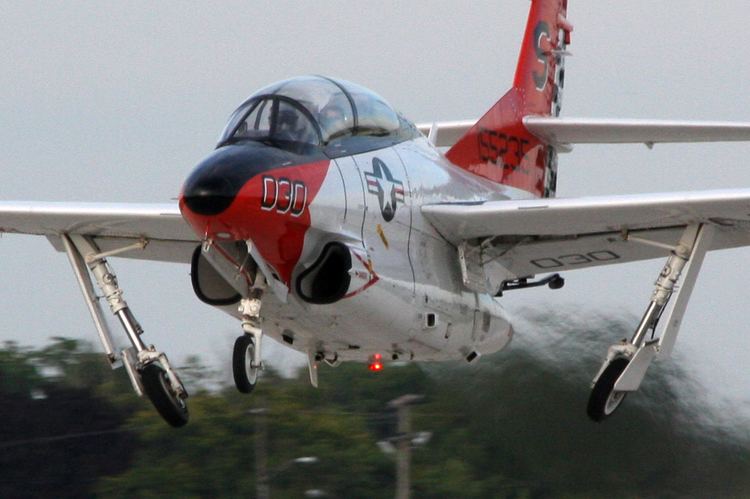 | ||
The North American T-2 Buckeye was the United States Navy's intermediate training aircraft, intended to introduce U.S. Navy and U.S. Marine Corps Student Naval Aviators and Student Naval Flight Officers to jets. It entered initial service in 1959, and was replaced by the McDonnell Douglas T-45 Goshawk in 2008.
Contents
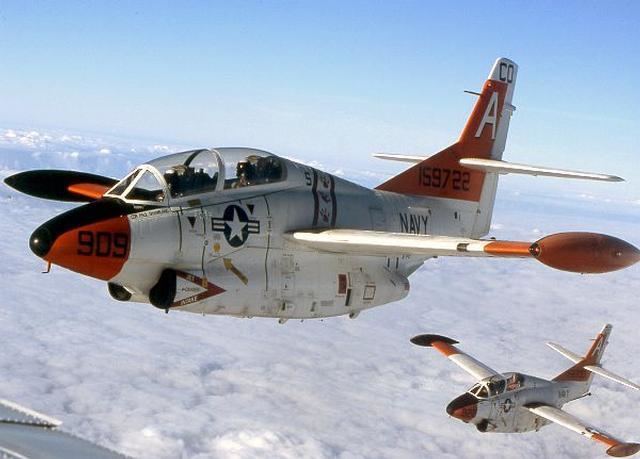
Design and development
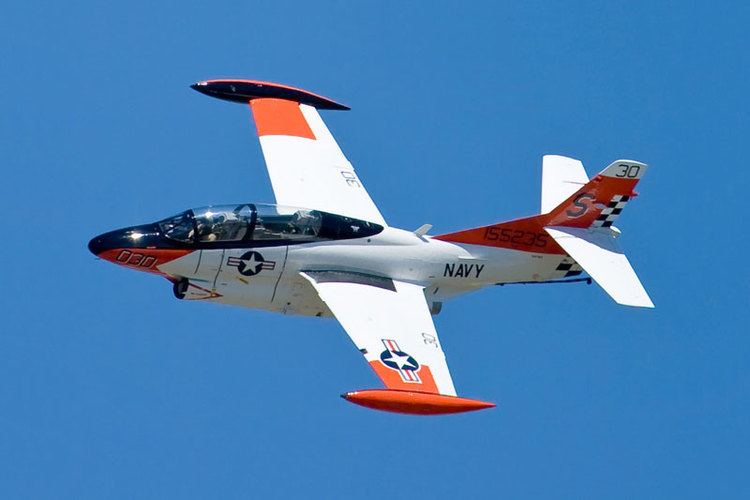
The first version of the aircraft entered service in 1959 as the T2J-1. It was redesignated the T-2A in 1962 under the joint aircraft designation system. The two-seat trainer was powered by one Westinghouse J34-WE-46/48 turbojet. The aircraft was subsequently redesigned, and the single engine was replaced with two 3,000 lbf (13,000 N) Pratt & Whitney J60-P-6 turbojets in the T-2B. The T-2C was fitted with two 2,950 lbf (13,100 N) thrust General Electric J85-GE-4 turbojets. The T-2D was an export version which was sold to the Venezuelan Air Force, while the T-2E was sold to the Hellenic Air Force. The T-2 Buckeye (along with the TF-9J) replaced the T2V-1/T-1A SeaStar, though the T-1 would continue in some uses into the 1970s.

The Buckeye was designed as a low-cost multi-stage trainer. Its straight wing was similar to that used in the original North American North American FJ-1 Fury and its cockpit controls were similar to the T-28C Trojan trainer. The T-2's performance was between that of the U.S. Air Force's Cessna T-37 Tweet, and the U.S. Navy's TA-4J Skyhawk. While it had no built-in armament, the T-2 had two underwing hardpoints for .50-inch gun pods, 100 lb (45 kg) practice bombs or 2.75-inch rockets.
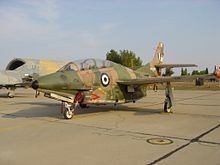
All T-2 Buckeyes were manufactured by North American at Air Force Plant 85, located just south of Port Columbus Airport in Columbus, Ohio. 273 aircraft were built during its production run. The name Buckeye refers to the state tree of Ohio, as well as the mascot of the Ohio State University.
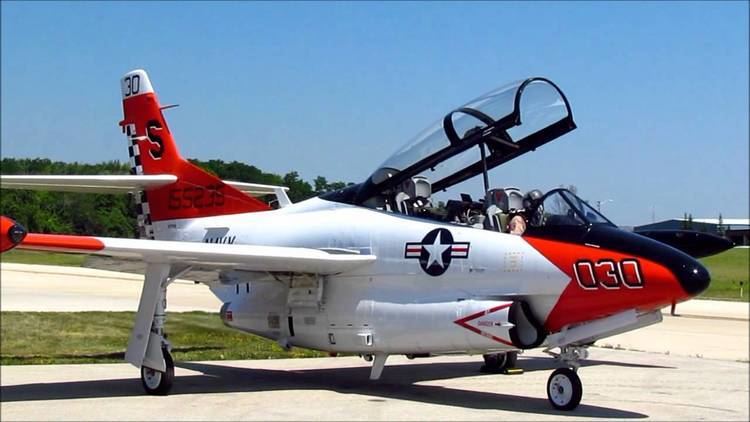
Every jet-qualified Naval Aviator and virtually every Naval Flight Officer from the late 1950s until 2004 received training in the T-2 Buckeye, a length of service spanning four decades. The aircraft first exited the Naval Aviator strike pipeline (where it saw its final carrier landings) in 2004, and the Naval Flight Officer tactical jet pipeline in 2008. In the Naval Aviator strike pipeline syllabus and the Naval Flight Officer strike and strike fighter pipeline syllabi, the T-2 has been replaced by the near-sonic McDonnell Douglas T-45 Goshawk (the U.S. Navy version of the BAE Systems Hawk), which is more comparable to other high performance subsonic trainers, or the supersonic U.S. Air Force Northrop T-38 Talon. More recently, the T-2 has been used as a director aircraft for aerial drones. Several T-2 Buckeyes, although still retaining their Navy markings, are now registered as civilian-owned aircraft with FAA "N" numbers and regularly appear at airshows.
Variants
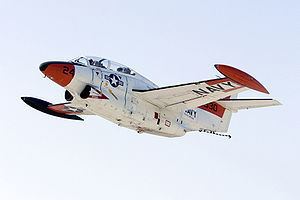
Operator
Specifications (T-2C Buckeye)
Data from Jane's All The World's Aircraft 1976–77.
General characteristics
Performance
